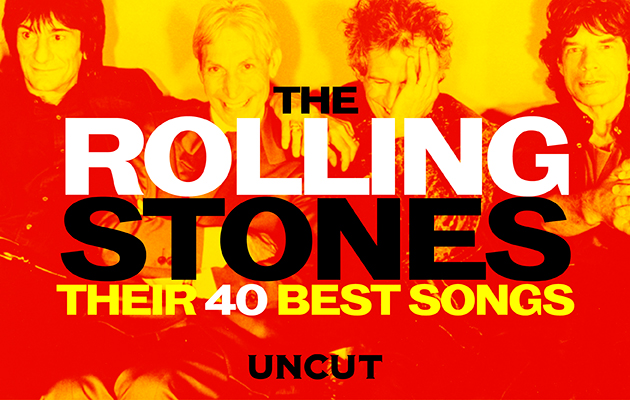In this very special piece from the Uncut archives (January 2002 issue, Take 56), an all-star cast, including Johnny Marr, Ryan Adams, Frank Black, Chris Hillman, Michael Gira and more, pick the Stones' 40 greatest tracks. ____________________ Joe Strummer remembers it, too: that time in the S...
9 PLAY WITH FIRE
B-side of “The Last Time”, 1965
JOE STRUMMER: This shows their genius, I think. There they were in London, building up a great frame of reference from the blues and American culture, and suddenly they switch back to this. It was great to hear places like Stepney and Knightsbridge suddenly spring out of the lyric, and the music is like something from another era, another era of English history.
MARC ALMOND: It’s really weird, because I just went and bought a Rolling Stones album with this on a couple of days ago. I heard it used in the background of a TV show recently and really loved it. It was going around and around in my head so I went out and bought it in the end.
BOB STANLEY: It’s the B-side of “The Last Time”. I hadn’t heard it for ages; it’s a quiet song, and it makes you realise how powerful they must have been at the time. There’s a real sense of danger here, and that minimal production makes it even more eerie. It’s fantastic. It’s perhaps because it’s not that familiar which makes it still sound potent.
DUKE ERIKSON: Flip “The Last Time” over and you’ve got this amazing song that starts off very understated then grows into this dark, threatening, sexual song. As an American kid in love with all things British, I especially liked the London references in the lyrics – Knightsbridge, Stepney – and the overall Englishness of the whole song.
MICHAEL J SHEEHY: I like the way this song name-checks Stepney Green since I used to spend quite a bit of time there. The real reason it gets me, though, is it seems quite a mean song with basic rock chords, bluesy guitars and a good, soulful chorus.
ADAM SWEETING: The sheer malevolence is still breathtaking. Jagger sings this startling specimen of Stonesian misogyny and class antagonism like Caligula giving the imperial thumbs-down. At this time the Stones generally sounded scuzzy and abrasive, but here they conjured sinister magic from a deadly economy of means. It opens with sombre guitar, then introduces death-march tambourine and a harpsichord that sounds as if it’s being played by cold, dead fingers. A veritable danse macabre.
MICK HUCKNALL: Since I was a kid I’ve identified this song with Cheyne Walk, Chelsea, and posh aristocracy. The images are so vivid. To me it’s about how working-class boys dealt with toffee-nosed women.
____________________
8 JUMPIN’ JACK FLASH
Single, 1968
JEFFREY LEWIS: If the Stones could’ve still been writing songs like this just 10 years afterwards, there would have been no difference between them and The Sex Pistols. Rock just doesn’t get any better. How can you even compare The Beatles to this?
MICK FARREN: A great exercise in tempered anger, it’s simply a gas, gas, gas. The Stones’ greatest demonstration of raw power and their seminal contribution to
the spawning of punk rock. The song also defined the dangerous cartoon character that nearly ate the band alive.
MICHAEL BONNER: It always makes me think of De Niro walking into the bar in Mean Streets, lit in red neon, shot in classic Scorsese slow-motion. “I was born in a crossfire hurricane.” It says everything you need to know about Johnny Boy.
ANDY WILLIAMS: This is a bit of an obvious choice, but I love the vibe to it. It always reminds me of Mean Streets and the scene in which Robert De Niro enters a bar to get hammered and this song is playing.



